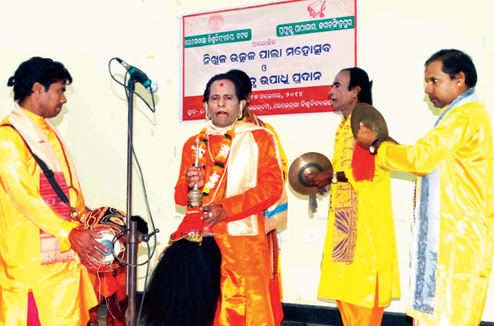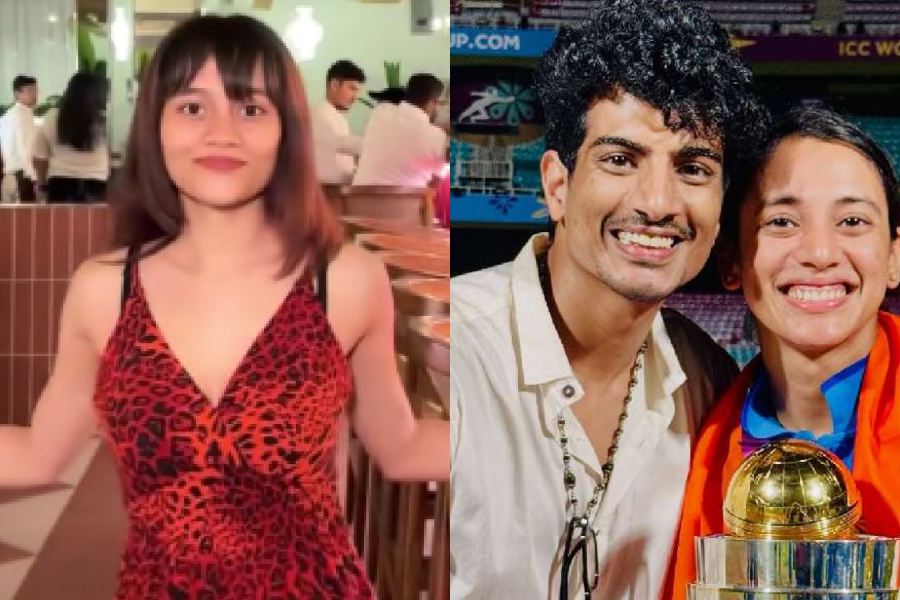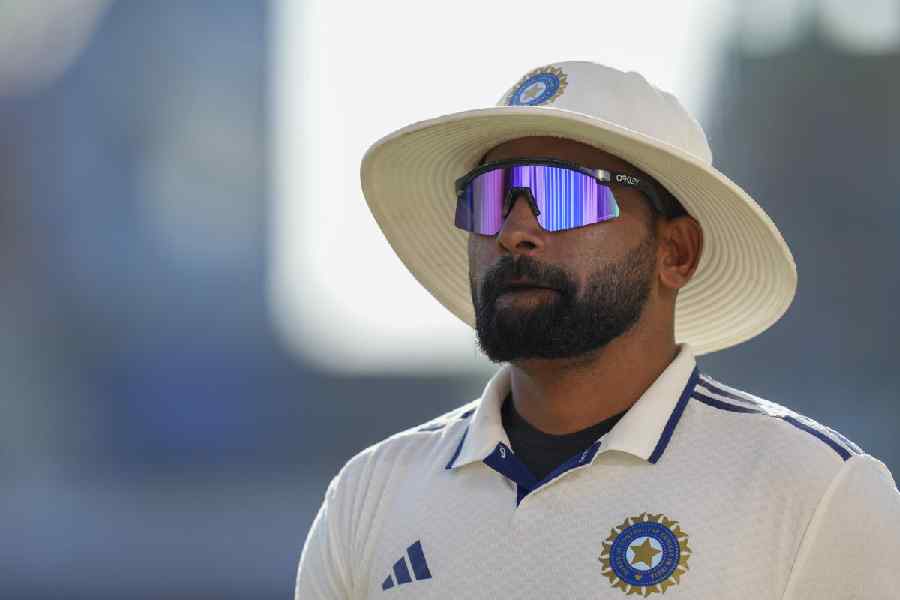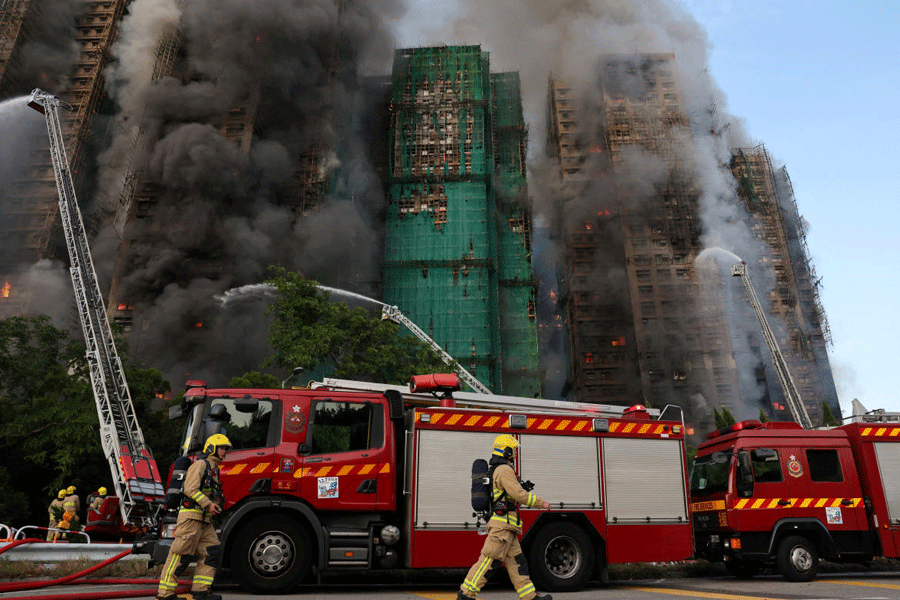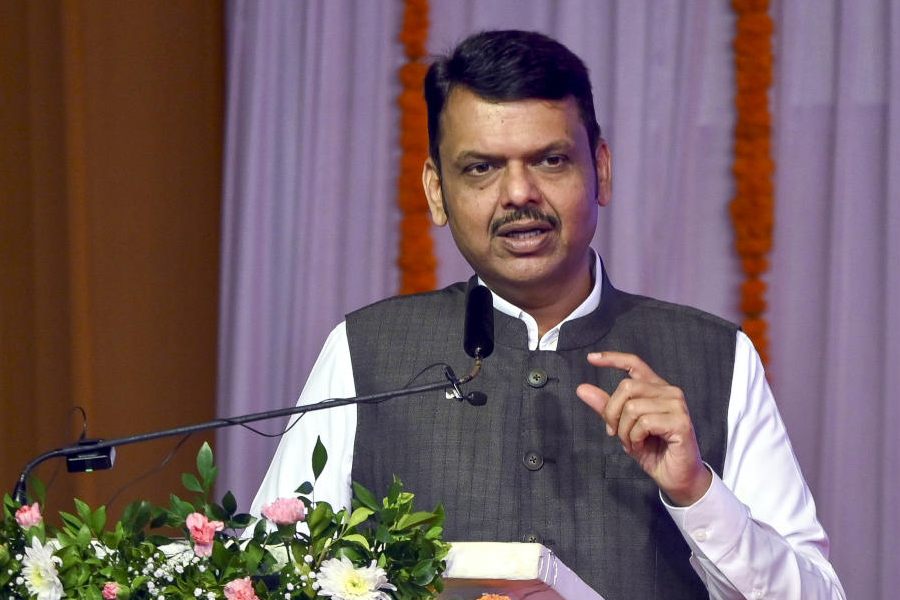 |
 |
| Artistes perform at the two-day Palla competition organised by Ravenshaw University. Pictures by Badrika Nath Das |
For years, Palla, a folk performing art form of Odisha, has been a major source of entertainment for the people. However, the folk art arm is slowly dying due to lack of encouragement and interest particularly from the younger generation.
The modern day means of mass media, including television and the Internet, has given Palla a stiff challenge.
Palla, a unique form of ballad, is a combination of elements of theatre, classical Odissi music, Odia and Sanskrit poetry, wit and humour.
Generally, Palla is presented in three ways — Baithaki (seated), Thia (standing) and Badi Palla, all these have an element of competition between groups.
Palla artistes have so far made significant contribution towards the society in bringing change and preserving the rich tradition, even under the threat of obliteration.
Alekh Nayak, 65, of Jagatsinghpur has been a part of a Palla group for the last 45 years. Recounting the art form that keeps him going even at this age, Nayak says: “I had started performing as a singer at the age of 10 and it was the interest towards music that made me become a Palla artist even though I wanted to make a career in Jatra.”
A nostalgic Nayak says that at times the audience would laugh and cry with the changing emotions of the lead Palla singer, showing the extent of impact the art form had on its audience.
The artiste still remembers those days when Palla groups used to earn between Rs 18 and Rs 30 for each performance. Although the groups are now earning Rs 4,000 to Rs 6,000 per performance, the artistes are unable to sustain their families. The next generation is also unwilling to take up the folk art form any more.
“Despite opposition, I joined the group and spent my golden years in promoting the art form. My three sons are into private jobs but I will continue to perform till my last breath,” Nayak said.
“At present, we get a chance to perform for only four months starting from Saraswati puja to the Rajo festival. Hence, the income is not enough to sustain our families throughout the year,” said Upendra Samantray, 56, a Palla artist from Mahanga in Cuttack district.
Samantray said his two sons and one daughter are pursuing higher education and are not keen to take up the performing art.
“Though my children have interest in Palla, they want to pursue higher education and become independent. I would support and guide them in the art as a guru whenever they want,” Samantray said.
Ravenshaw University’s maiden effort of organising a two-day Palla competition has been appreciated by all the artistes who are struggling to keep the art alive.
The Palla competition was organised with support from Prafulla Pathagar of Jagatsinghpur that has played a champion role in reviving the folk art form by organising such competitions for the last five years.
Around 20 Palla groups from different parts of the state participated in the competition that saw a large turnout, including students.
The artistes said that of late the state government has also initiated efforts towards promoting the folk art of Palla by documentation and encouraging the artistes.
Various Palla groups are being asked to spread awareness among the rural population on various social issues such as prevention of various diseases including dengue, malaria, diarrhoea and other issues.
Besides, a block-level Kalakar Sangha is also being formed where registered singers will be paid Rs 1,500 per hour for any performance, a Palla artist said.
“It was a unique experience as we hardly get a scope to watch a live Palla performance. The groups should experiment with the traditional concepts and blend them with new ideas. They should come up with a synopsis and inform the audience before the show to gain their attention,” said Manoranjan Sahu, a student.

